Novarupta
The Most Powerful Volcanic Eruption of the 20th Century
June 6th, 1912
Volcanic Monitoring - 1912 vs. TodayToday the stirring of an important volcano draws enormous global attention. Weeks or even months before most large eruptions a buzz circulates through an electronically-connected community of volcano scientists as clusters of small earthquakes are detected by a global array of seismographs. Many scientists working at diverse global locations interpret this data and begin to collaborate about an awakening volcano and the eruption that might follow. Reports are posted on the internet and news stories communicate the volcano's activity to millions of people. Often it is a false alarm – the volcano is simply stirring.If the earthquakes strengthen and begin moving upwards, many of these scientists will travel to the area of potential eruption to make observations and set up a local network of data-gathering instruments. However, in 1912, Alaska was not a US state, very few scientists were supported to do volcanic studies and a worldwide network of seismic monitoring was not in place. Scientists were just starting to understand the mechanics of volcanic eruptions. Novarupta Volcano Erupts!On June 6th, 1912 a tremendous blast sent a large cloud of ash skyward and the eruption of the century was underway. People in Juneau, Alaska, about 750 miles from the volcano, heard the sound of the blast – over one hour after it occurred.For the next 60 hours the eruption sent tall dark columns of tephra and gas high into the atmosphere. By the time the eruption ended the surrounding land was devastated and about 30 cubic kilometers of ejecta blanketed the entire region. This is more ejecta than all of the other historic Alaska eruptions combined. It was also thirty times more than the 1980 eruption of Mount St. Helens and three times more than the 1991 eruption of Mount Pinatubo, the second largest in the 20th Century. Impact of the Eruption
Within just a few hours after the eruption a thick blanket of ash began falling upon the town - and ash continued falling for the next three days, covering the town up to one foot deep. The residents of Kodiak were forced to take shelter indoors. Many buildings collapsed from the weight of heavy ash on their roofs. Outside, the ash made breathing difficult, stuck to moist eyes and completely blocked the light of the sun at mid-day. Any animal or person who was caught outside probably died from suffocation, blindness or an inability to find food and water. Pyroclastic FlowBack on the peninsula, heavy pyroclastic flows swept over 20 kilometers down the valley of Knife Creek and the upper Ukak River. (A pyroclastic flow is a mixture of superheated gas, dust, and ash that is heavier than the surrounding air and flows down the flank of the volcano with great speed and force.)These flows completely filled the valley of Knife Creek with ash, converting it from a V-shaped valley into a broad flat plain.
Volcanic AshImmediately after the June 6th blast, an ash cloud rose to an elevation of about 20 miles. It was then carried by the wind in a westerly direction, dropping ash as it moved. The ash deposits were thickest near the source of the eruption and decreased in thickness downwind. (The satellite image above/right has red contour lines showing the thickness of the ash deposits in the area of the eruption. Measurable thickness of ash fell hundreds of miles beyond the one meter contour line.)When the eruption stopped on June 9th, the ash cloud had spread across southern Alaska, most of western Canada and several U.S. states. Winds then carried it across North America. It reached Africa on June 17th. Although the eruption had these far-reaching effects, most people outside of Alaska did not know that a volcano had erupted. More surprising is that no one knew for sure which of the many volcanoes on the Alaska peninsula was responsible. Most assumed that Mount Katmai had erupted but they were wrong. Valley of Ten Thousand SmokesAfter the eruption, the National Geographic Society began sending expeditions to Alaska to survey the results of the eruption and to inventory the volcanoes of the Alaskan peninsula. Robert Griggs led four of these expeditions. During his 1916 expedition, Griggs and three others traveled inland to the eruption area. What they found exceeded their imagination.First, the valley of Knife Creek was now barren, level and filled with a loose, sandy ash which was still hot at depth. Thousands of jets of steam were roaring from the ground. Griggs was so impressed that he called it the "Valley of 10,000 Smokes". James Hine, a zoologist on the expedition described the location: "Having reached the summit of Katmai Pass, the Valley of Ten Thousand Smokes spreads out before one with no part of the view obstructed. My first thought was: We have reached the modern inferno. I was horrified, and yet, curiosity to see all at close range captivated me. Although sure that at almost every step I would sink beneath the earth's crust into a chasm intensely hot, I pushed on as soon as I found myself safely over a particularly dangerous-appearing area. I didn't like it, and yet I did." Katmai Caldera & Novarupta DomeDuring the eruption a large amount of magma was drained from magma chambers below. The result was a removal of support from beneath Mount Katmai which is six miles from Novarupta. The top several hundred feet of Katmai - about one cubic mile of material - collapsed into a magma chamber below. This collapse produced a crater about two miles in diameter and over 800 feet deep.Early investigators assumed that Katmai was responsible for the eruption. This assumption was based upon Katmai being near the center of the impact area, Katmai was visibly reduced in height, and early witness accounts thought that the eruption cloud ascended from the Katmai area. Closer observation was not possible and expeditions into the impact zone would be very difficult to accomplish. The first scientific investigation to get an up-close look at the eruption area did not occur until 1916 when Robert Griggs found a 2-mile-wide caldera where Mount Katmai once stood. He also found a lava dome at the Novarupta vent. These observations convinced Griggs that Katmai was the source of the eruption. It was not until the 1950s - over forty years after the eruption - that investigators finally realized that ash and pyroclastic flow thicknesses were greatest in the Novarupta area. This discovery produced a revelation that Novarupta - and not Katmai - was the volcano responsible for the eruption (see satellite image medium resolution, 164 KB or higher resolution, 1330 KB). This is possibly the most important false accusation in the history of volcanic study. Could Novarupta Erupt Again?
These large eruptions will have enormous local and global impact. Local impact will include the lahars, pyroclastic flows, lava flows and ash falls that are expected from a volcanic eruption. These can result in a significant loss of life and financial impact. The activity of these volcanoes is monitored by the United States Geological Survey and others so that eruptions can be predicted and their events mitigated. Large eruptions of Novarupta's scale at high latitudes can have a significant impact upon global climate. Recent studies have linked high latitude volcanic eruptions with altered surface temperature patterns and low rainfall levels in many parts of the world. The 1912 eruption of Novarupta and other Alaska eruptions volcanoes have been linked with drought and temperature changes in northern Africa. Another significant impact is the distribution of volcanic ash. The image at right shows the ash fall impact areas for five important volcanic eruptions of the 20th century. Augustine (1976), St. Helens (1980), Redoubt (1990) and Spurr (1992) all produced ash falls of significant regional impact. However, Novarupta's ash fall was far greater than any other Alaska eruption in recorded history and contained a greater volume than all of the Alaska eruptions which have been recorded combined. One of the most important reasons to monitor volcanic eruptions is the potential danger that they present to commercial air traffic. Jet engines process enormous amounts of air and flying through finely dispersed ash can cause engine failure. Impacting the tiny ash particles at high speed is very similar to sandblasting. This can "frost" the jet's windshield and damage external parts of the plane. Before the danger of flying through finely dispersed ash was appreciated several commercial jets were forced to land after sustaining serious damage while in the air. Eruptions the size of Spurr, Augustine, Redoubt and St. Helens can damage jets flying over 1000 miles away. An eruption the size of Novarupta would ground commercial jet traffic across the North American continent. What Can We Do About It?People can not prevent this type of eruption. They can assess the potential impact, develop with the possibility of loss in mind, plan a response, educate the public and key decision makers, and monitor the region where it might occur.The more you know about a natural hazard, the greater your chances of avoiding injury or loss. We are lucky to have this record of the past. | 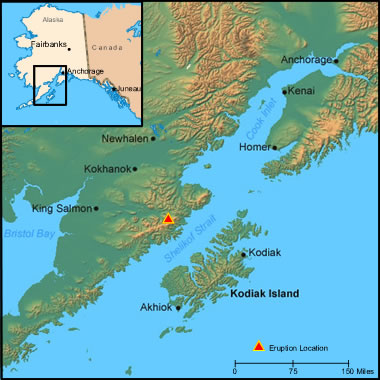

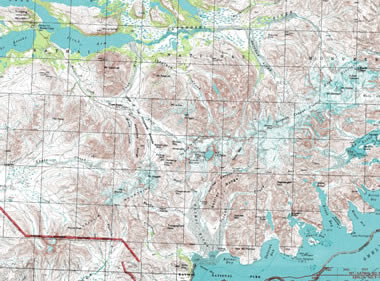
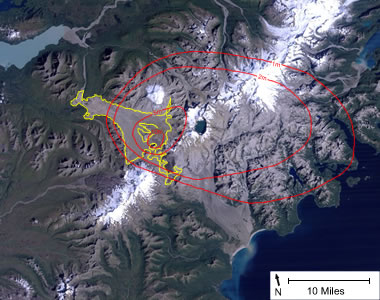
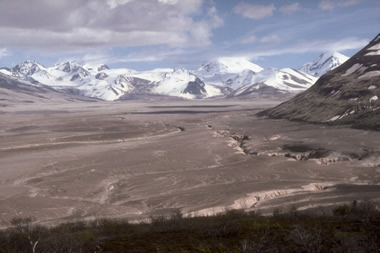
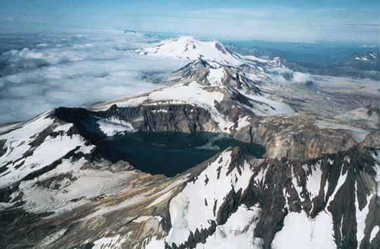
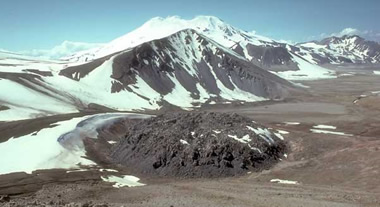

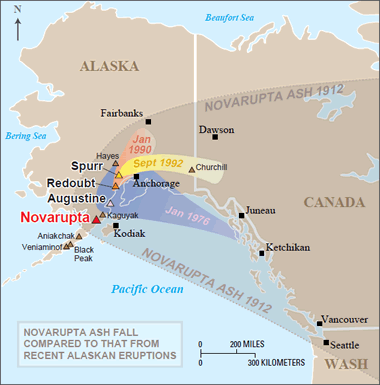

|
Source
--
Got Penguins?
Penguin News Today
The Science of Penguins
The Gentoos are back! Come see them on live cam at:
Gentoo Penguins of Gars O'Higgins Station, Antarctica
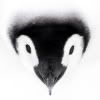
__._,_.___
No comments:
Post a Comment